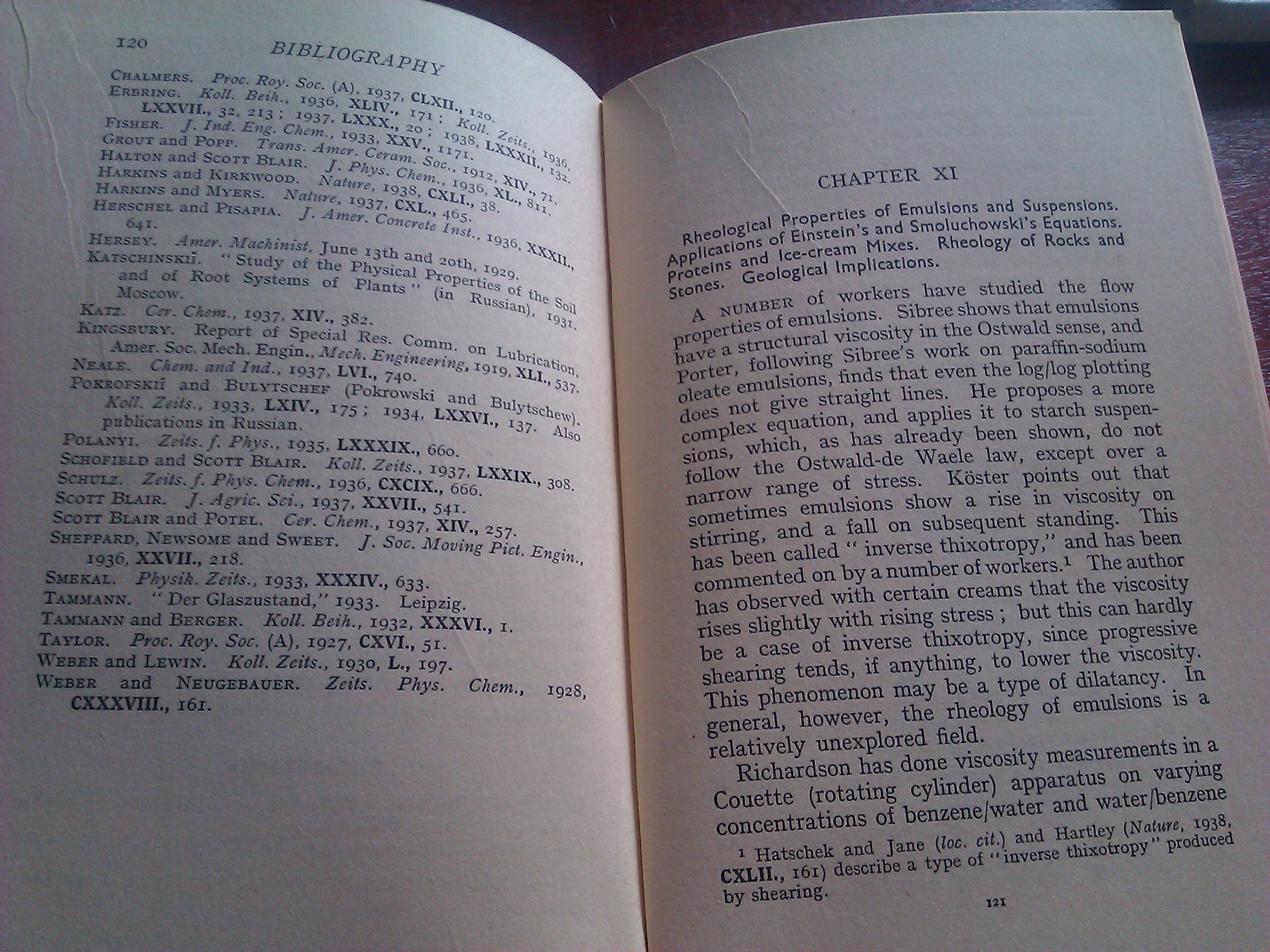str (79)

120 BIBLIOGRAPHY
Chalmers. Proc. mm Soc. (A), 1937, CLXIŁ, 120.
Erbring. Koli Beih., 1936, XLIV., 171; Koli Zeit LXXVIL, 32, 213 ; 1937- LXXX., 20 ; I938, LXXXli
Fisher. J. Ind. Ettg. Chem., 1933, XXV., 1171. ’ *32.
Grout and Popp. Trans. Anter. Ceram. Soc., 1912, XIV.
Halton and Scott Blair. J. Phys. Chem., 1936, XL., Sii ’
Harkins and Kirkwood. Naturę, 193S, CXLI., 38.
Harkins and Myers. Naturę, 1937, CXL., 465.
Herschel and Pisapia. J. A mer. Concrete Inst., 1936, XXXII 641.
Hersey. A mer. Machinist, June I3th and 2oth, 1929.
Katschinskii. i Study of the Physical Properties of the Sofl and of Root Systems of Plants ” (in Russian), tgaj, Moscow.
Katz. Cer. Chem., 1937, XIV., 382.
Kikgsbury. Report of Special Res. Comm. on Lubrication, Amer. Soc. Mech. Engin., Mech. Engineering, 1919, XŁI., 337,
Neale. Chem. and Ind., 1937. LVI., 740.
Fokrofsku and Bulytschef (Pokrowski and Bulytschew). gra Zeits.. 1933. LXI\'., 175; 1934, LXXVI., 137. Also pnblications in Russian.
Polanyi. Zeits. f. Fhys., 1035. LXXXIX., 660.
Schofielp and Scott Blair. Koli Zeits., 1937, LXXIX., 30S.
Schulz. Zeits. f. Phys. Chem., 193Ó, CXCIX., 666.
Scott Blair. J. Agric. Sci., 1937, XXVII., 541.
Scott Blair and Potel. Cer. Chem., 1937, XIV., 257.
Shepfarp. Newsome and Sweet. J. Soc. Moting Piet. Engin., 1936, XXVII., 218.
Smekal. Physik. Zeits., 1933, XXXIV., 633.
Tammann. i Der Glaszustand,” 1933- Leipzig.
Tammann and Berger. Koli Beih., 1932, XXXVI., 1.
Taylor. Proc. Roy. Soc. (A), 1927, CXVI., 51.
Weber and Lewin. Koli Zeits., 1930, L., 197.
Weber and Neugebauer. Zeits. Phys. Chem., 1928 CXXXVIII., 161.
Rheologlcal Propertles of Emulslons and Suspenslons. Applications of Einsteln’s and Smoluchowskl’s Equatlons. Proteins and Ice-cream Mixes. Rheology of Rocks and Stones. Geological Impllcatlons.
A number of workers have studied the flow properties of emulsions. Sibree shows that emulsions have a structural viscosity in the Ostwald sense, and Porter, following Sibree's work on paraffin-sodium oleate emulsions, finds that even the log/log plotting does not give straight lines. He proposes a morę complex eąuation, and applies it to starch suspen-sions, which, as has already been shown, do not follow the Ostwald-de Waele law, except over a narrow rangę of stress. Koster points out that sometimes emulsions show a rise in viscosity on stirnng, and a fali on subseąuent standing. This has been called " inverse thixotropy,” and has been commented on by a number of workers.1 The author has observed with certain creams that the yiscosity rises slightly with rising stress; but this can hardly be a case of inverse thixotropy, sińce progressive shearing tends, if anything, to lower the yiscosity. This phenomenon may be a type of dilatancy. In generał, however, the rheology of emulsions is a relatively unexplored field.
Richardson has done yiscosity measurements in a Couette (rotating cylinder) apparatus on varying concentrations of benzene/water and water/benzene
1 Hatschek and Jane (loc. cit.) and Hartley (Naturę, 1938, CXLII., 161) describe a type of "inverse thixotropy” produced by shearing.
Wyszukiwarka
Podobne podstrony:
str (79) 120 BIBLIOGRAPHY Chalmers. Proc. mm Soc. (A), 1937, CLXIŁ, 120. Erbring. Koli Beih., 1936,
46894 str (86) lob BIBLIOGRA PH Y PnxoK. J. Ind. Eng. Cham., 1934. XXVI., 345. i tciKS and Thompson.
66381 str (111) B / B LI OGRA PHY BCcDowrll and Usher . Proc. Roy. Soc. (A), jn,. csyyt g
str 79 Serce, cor 79 Vortex cordis Sulcus intervenfricularis anterior Apex cordis Sulcus interventri
Str 3 25) 2 ekscentryki wykonane z płytki aluminiowej 4 mm; jeden z nich okrą
80 (173) 80 NIEZNANY ŚWIAT © ze str. 79 21.05-21.0521.03-20.0? Nadchodzący Nowy Rok postawi przed
56145 str (41) -.120. -I dm . ..121.40,2 g. -.122. branek - 33,3 g. 1.123. Andrzej
Strona�37 5. Karta kat. J/O - 5, str. 79 - węzeł połączenia naroża ściany z oknem,
str (41) -.120. 4 dm . -.121.40,2 g. •.122. Franek - 33,3 g. 1.123. Andrzej - 9,33
str. 79 zad. 1 str. 79 zad. 2 str. 74 zad. 5 38 + 12
DSC03359 (4) 164 Hinduizm święta 75,76,77-79,120, 123,126,127 tantra 33 telewizja 58-59 Thoreau
26 Galii. Leucosiidae m. Urnalana gen. nov. Zool. Med. Leiden 79 (2005) v,1984; 4 33 {6.2-73 mm cl),
str 69 Przepona, diaphragma 60 Proc. xiphołdous Pars stemalls diaphragmatis — Centrum tendineum-----
więcej podobnych podstron